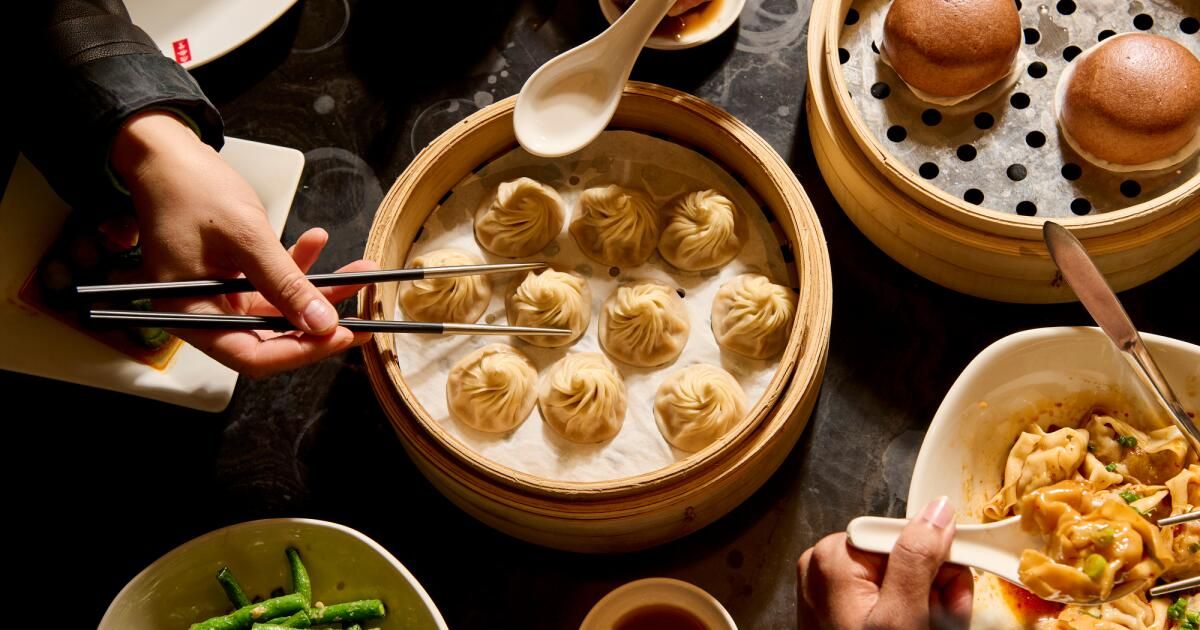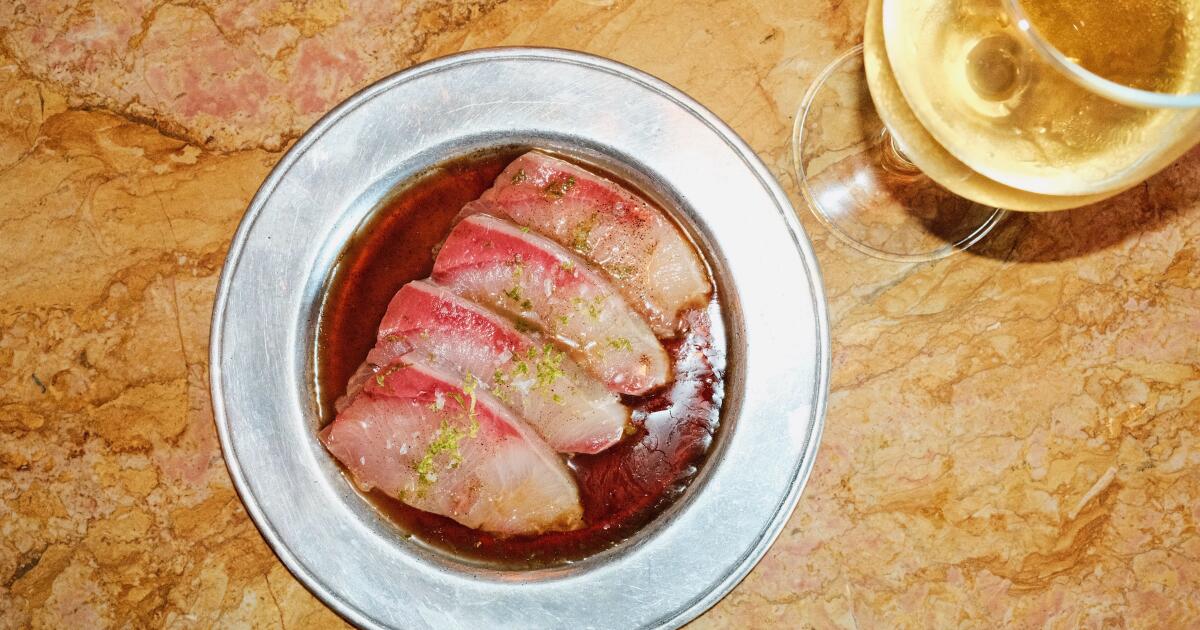I'm standing outside a Din Tai Fung located inside a shopping mall in Taipei watching a team of seven masked chefs in stiff white coats behind a glass window, kneading, filling, weighing, dusting and pleating dough under fluorescent lights.
Kan Kuang-Ming, head chef at Din Tai Fung Taiwan, stands in the center, head bowed and shoulders wrinkled, forming dumplings. He takes the dough and filling in his left hand and, with his right, makes a series of deft pinches to form a perfect swirl. I count how long it takes to fold a ball of dough: eight seconds.
Art of the Fold: Chef training at Din Tai Fung lasts 12 weeks, but can take several months to a year to get up to speed. Every Din Tai Fung in the US has a dumpling training manager.
(Yasara Gunawardena / For The Times)
“When you look out from the glass, it looks simple,” he tells me. “But if you try it yourself, you realize how difficult it is.” Kan has been with Din Tai Fung for 21 years. “I started when I was 18,” he says.
Din Tai Fung has been producing consistently popular batches of soup dumplings for over 50 years. With 170 locations in more than a dozen countries, the Taiwanese chain controls long daily lines, attracting customers mesmerized by the glass-enclosed kitchen where packages of dough and meat are meticulously molded and assembled in real time.
The chain is steadily taking America by storm, thanks to the efforts of the next generation of the founding family.
Since its North American debut in California more than two decades ago, the restaurant chain has focused exclusively on the West Coast. Last month in Glendale, Din Tai Fung moved from Americana at Brand to the gallery, occupying a gigantic 11,443 square feet of space. A Downtown Disney location is planned for next year and, most notably, the company recently signed a 15-year lease to open in New Yorkwhich will mark the first East Coast location in its portfolio.
Each Din Tai Fung restaurant produces an average of 10,000 dumplings a day. It's an operation that requires the labor of approximately 30 rotating chefs, all of whom must master the art of the perfect fold. It is this attention to detail that has ensured Din Tai Fung's reign as one of the most successful dumpling chains in the world.
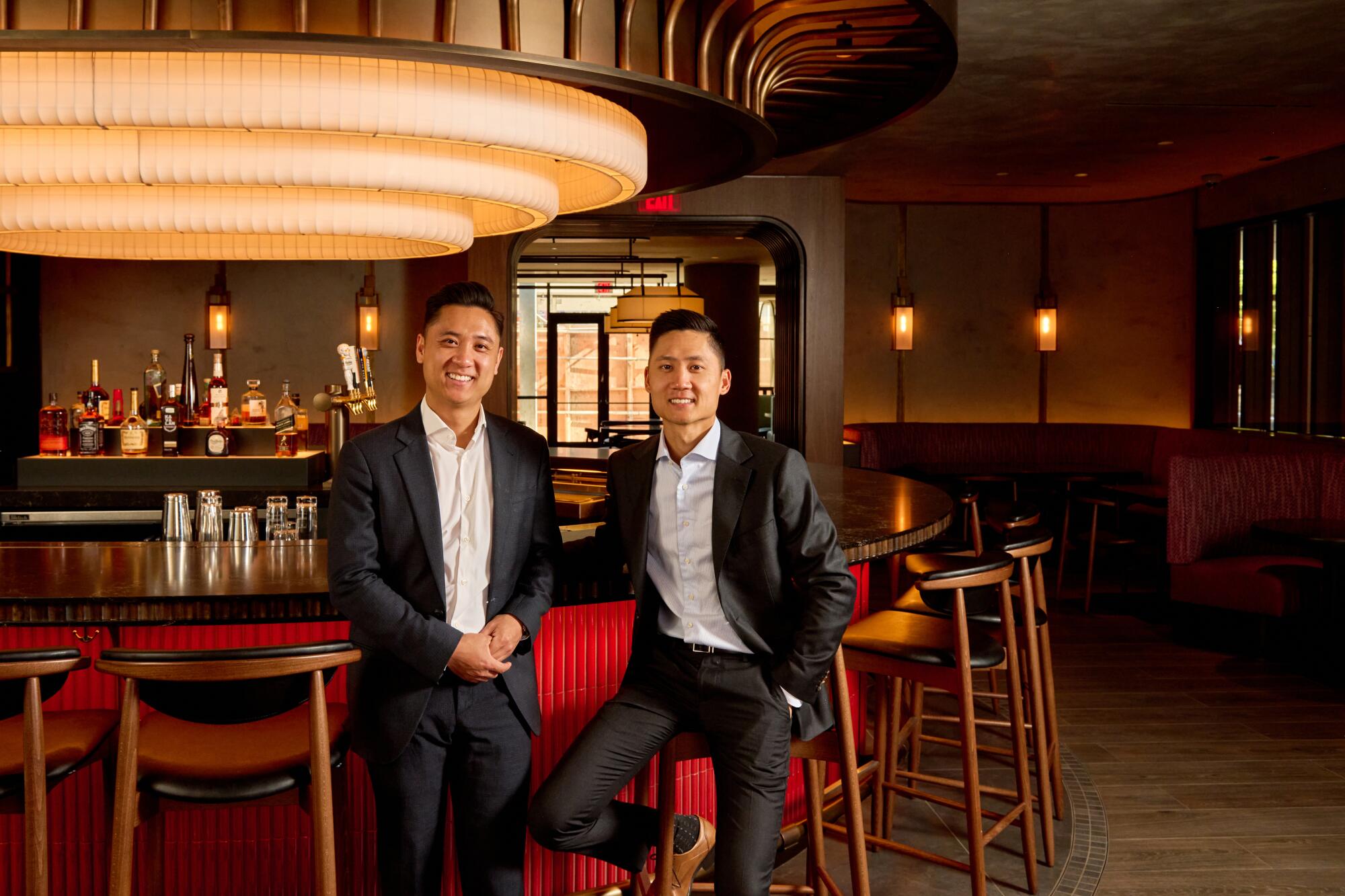
Next-generation Din Tai Fung: Brothers Aaron and Albert Yang are the third-generation custodians of the growing restaurant chain. “We were using credit cards when we could barely see at the counter,” Aaron says.
(Yasara Gunawardena / For The Times)
Kan says it took him three months to learn how to properly fold a soup dumpling that met the standard.
It took brothers Aaron and Albert Yang twice as long to get it right. “It took us at least six months to a year to perfect the craft and finally be able to make some dumplings that could be sold,” says Albert.
Aaron and Albert are the third generation custodians of Din Tai Fung. Both vice presidents of Din Tai Fung USA, they are in charge of overseeing the Taiwanese dumpling chain's presence in the US market. “The higher the profile and the places with more foot traffic, the more we can share our food and culture,” Albert says.
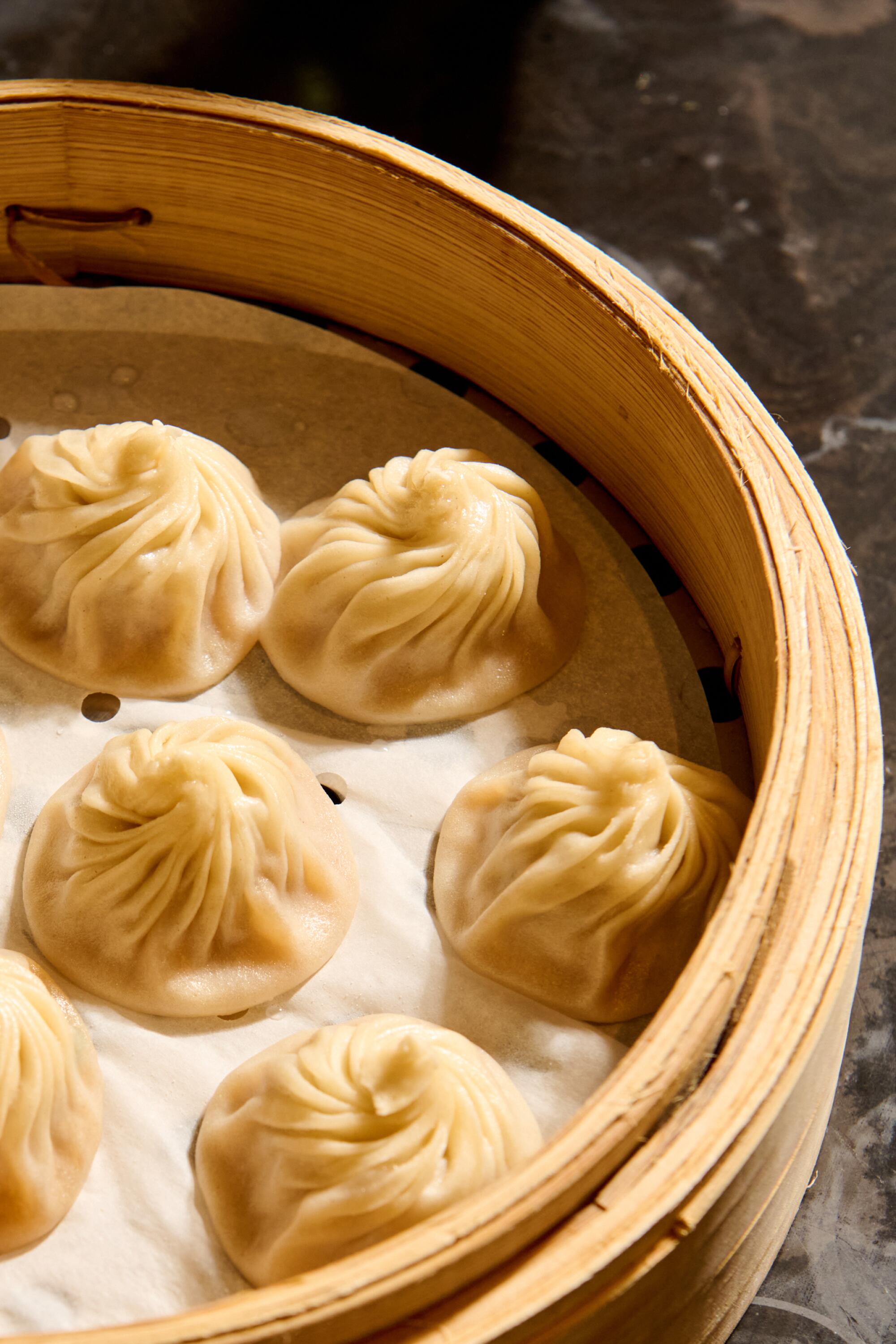
At Din Tai Fung, each dumpling must follow an exact standard: 18 folds, 21 grams per piece. An experienced chef should be able to fold an average of eight balls of dough in one minute.
(Yasara Gunawardena / For The Times)
Xiao long bao, or soup dumpling, comes from the greater Shanghai region of China and, according to Chinese tradition, was invented sometime between the 18th and 19th centuries. A package of gently seasoned broth and pork that reflects the light and delicate sensibility of the region's cuisine. But while it is a specialty of eastern China, it really wasn't until Din Tai Fung came along that it became a global phenomenon.
With its paper-thin skin and sticky mixture of ground pork and gelatinized broth, soup dumpling is one of the most difficult dumplings to make. Spread a skin too thin or pinch an imperfect fold and the broth will leak. Too thick and the dumpling loses all its appeal. In order to hold the filling, the center of the skin should be a couple of hairs thicker than the edges. And at Din Tai Fung, each dumpling must follow an exact standard: 18 folds, 21 grams each. An experienced chef should be able to fold an average of eight balls of dough in one minute.
“A dumpling chef has to have a lot of patience,” Kan says. “You have to fail about 1,400 times before you can create one that is beautiful.”
The company was founded by Aaron and Albert's grandfather, Yang Bing-Yi, a Chinese immigrant who moved to Taiwan when he was 20 during the Chinese Civil War in 1927. Originally a nondescript cooking oil store in Taipei, the store It became a restaurant when Yang hired a Shanghai-born chef and started selling dumpling soup.
Din Tai Fung, the restaurant, formally opened in 1972 and eventually caught the attention of international food critics and chefs. who spoke effusively about his “Tasty fillings and light, thin dough.” In 1995, the elder Yang retired and his sons took over.
From a very young age, Aaron and Albert learned the ins and outs of the family business. Although they grew up in Los Angeles, they visited Taiwan frequently and spent their vacations at their grandfather's restaurant. The chefs pulled swans out of the dough and carried them around the city. “We were just babies and they took us on their motorcycles,” Albert remembers.
When their father, Frank Yang, opened the first American Din Tai Fung in Arcadia in 2000, the brothers were given a little more responsibility.
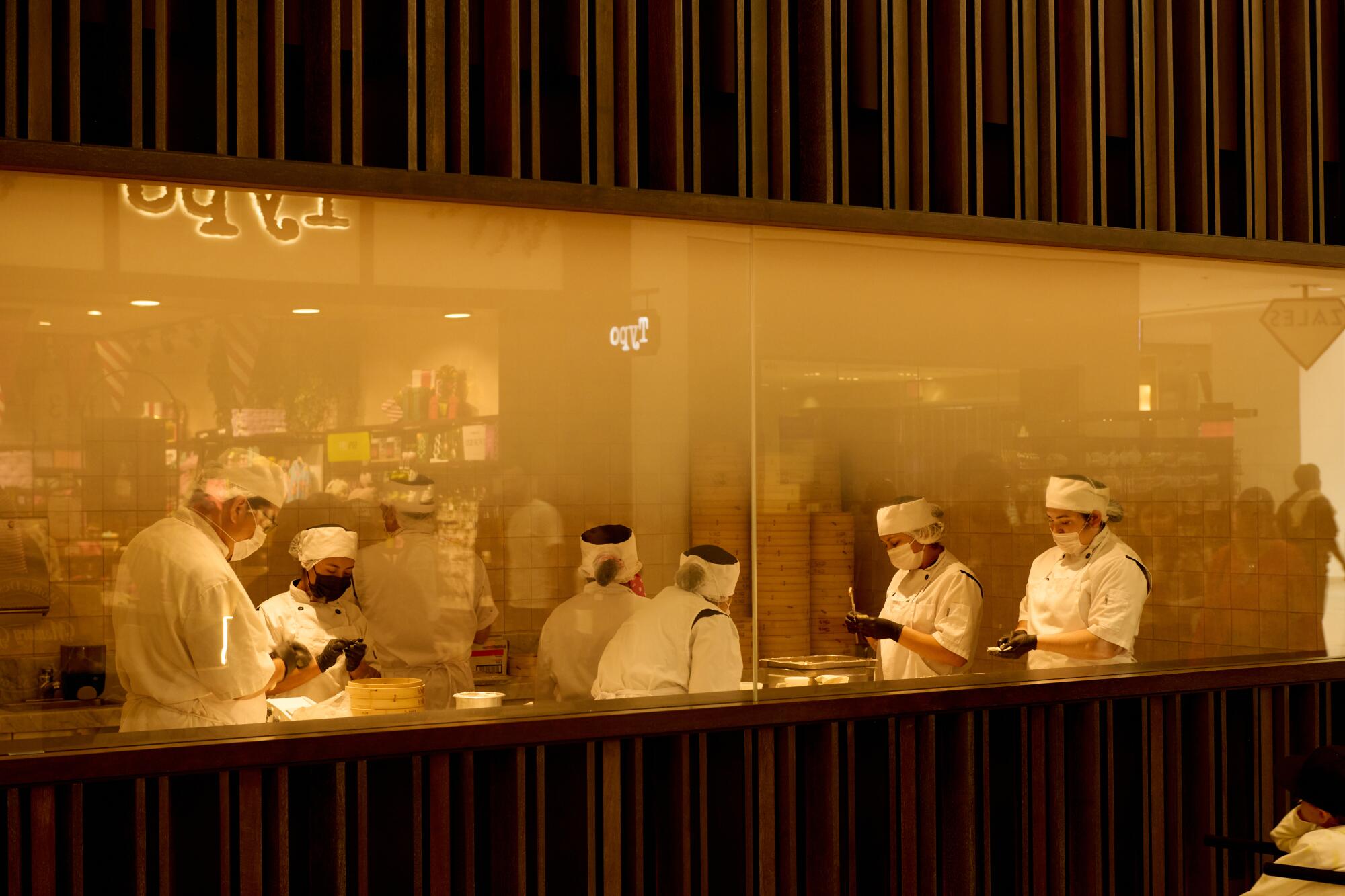
Each Din Tai Fung produces an average of 10,000 dumplings a day, with approximately 30 chefs rotating.
(Yasara Gunawardena / For The Times)
“[My father] I saw a Din Tai Fung in the US that was using the brand without our permission,” says Aaron. “It kind of inspired him to open his own Din Tai Fung here and just show people what the real thing is like.”
Was a instant hit.
“We were using credit cards when we could barely see at the counter,” Aaron says. By seventh grade, they were already learning to fold dumplings themselves.
Both Yang brothers eventually earned degrees in hotel management from Cornell University and today head the outposts of America's multibillion-dollar dumpling empire. Aaron focuses on business development and Albert focuses on food and operations.
“Our personalities are a little different, but it's great for the business because we just divide the tasks,” Albert says.
Like the Yangs, I also grew up in Arcadia. I vividly remember the snaking lines that formed daily outside that first Din Tai Fung. Located in a small shopping center with a long green awning and “Din Tai Fung Dumpling House” written in bold, forest-green letters, it was the city's most popular attraction for more than a decade.

Frank Yang opened the first American Din Tai Fung in Arcadia in 2000. Last month, the company opened an 11,443-square-foot restaurant in Glendale.
(Yasara Gunawardena / For The Times)
Getting a seat was always difficult, so my mom would call ahead on weekdays and pick up a takeout order of dumplings for my brother and I to enjoy as an after-school snack.
The wait was especially long on weekends, as people from all over Greater Los Angeles made the trip just to enjoy the paper-thin dumplings.
“There's something to be said about how universally it is liked by people of all different cultures and ethnic backgrounds,” Aaron says.
The Glendale branch, which opened 13 years after the Arcadia location, was established while the Yang brothers were attending college. “My father opened another location after learning that his children were going to college to major in hotel management,” Aaron says. “He gave Him the confidence to know that the next generation will at some point be ready to take the reins.”
Since then, the Yang brothers have made some improvements, such as launching a waiting list and online reservation system, modernizing a training manual, and offering above-average salaries for their staff.
“Our entry-level hourly positions start at $20 per hour and managers start at $100,000 per year,” Albert says. And while aspiring Din Tai Fung chefs in Taiwan begin the craft shadowing a senior chef, incoming dumpling masters in the United States enroll in a training program.
“Our current training program is 12 weeks, although it still takes us six months or even a year to catch up,” says Albert. “Each of our restaurants in the United States has a dumpling training manager, and that manager is dedicated solely to training the team and ensuring the quality and consistency behind the 18 folds and ensuring each dumpling weighs 21 grams.”
Half a century since their debut, the Yangs say keeping the food consistent and traditional is what sets them apart.
“I still remember someone coming up to my dad and asking why don't we make a cheeseburger soup dumpling,” Aaron says. “But that would change the essence of what food is. “We have always felt strongly that food should be authentic from Taiwan, where we are originally from.”
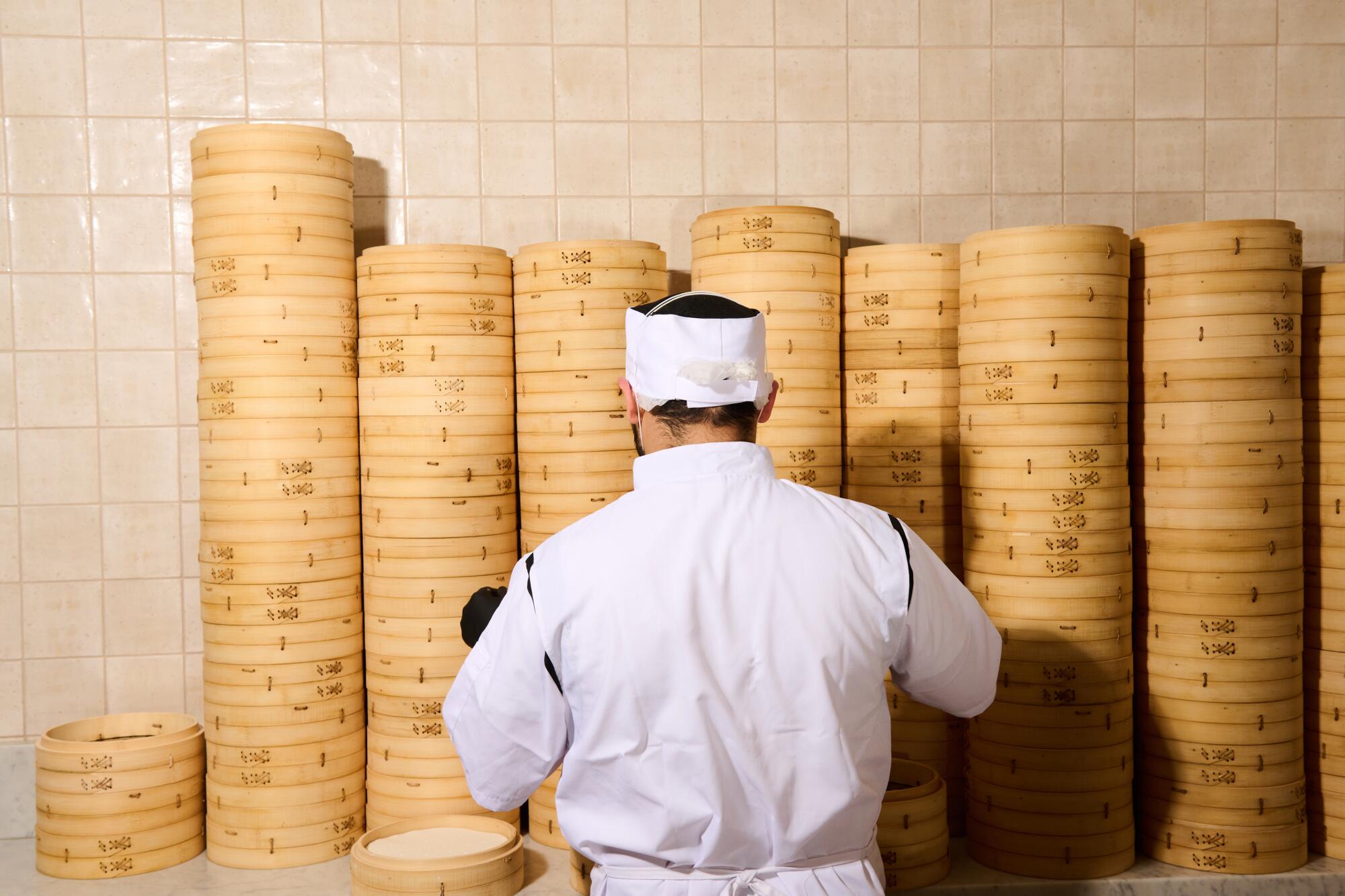
By the sky: Stacks of steamer baskets at the new Din Tai Fung in Glendale are ready to take orders for the restaurant's signature soup dumplings.
(Yasara Gunawardena / For The Times)
Clarissa Wei is a writer and cookbook author. Her book, “Made in Taiwan: Recipes and Stories from the Island Nation” (Simon & Schuster), was published this fall.

